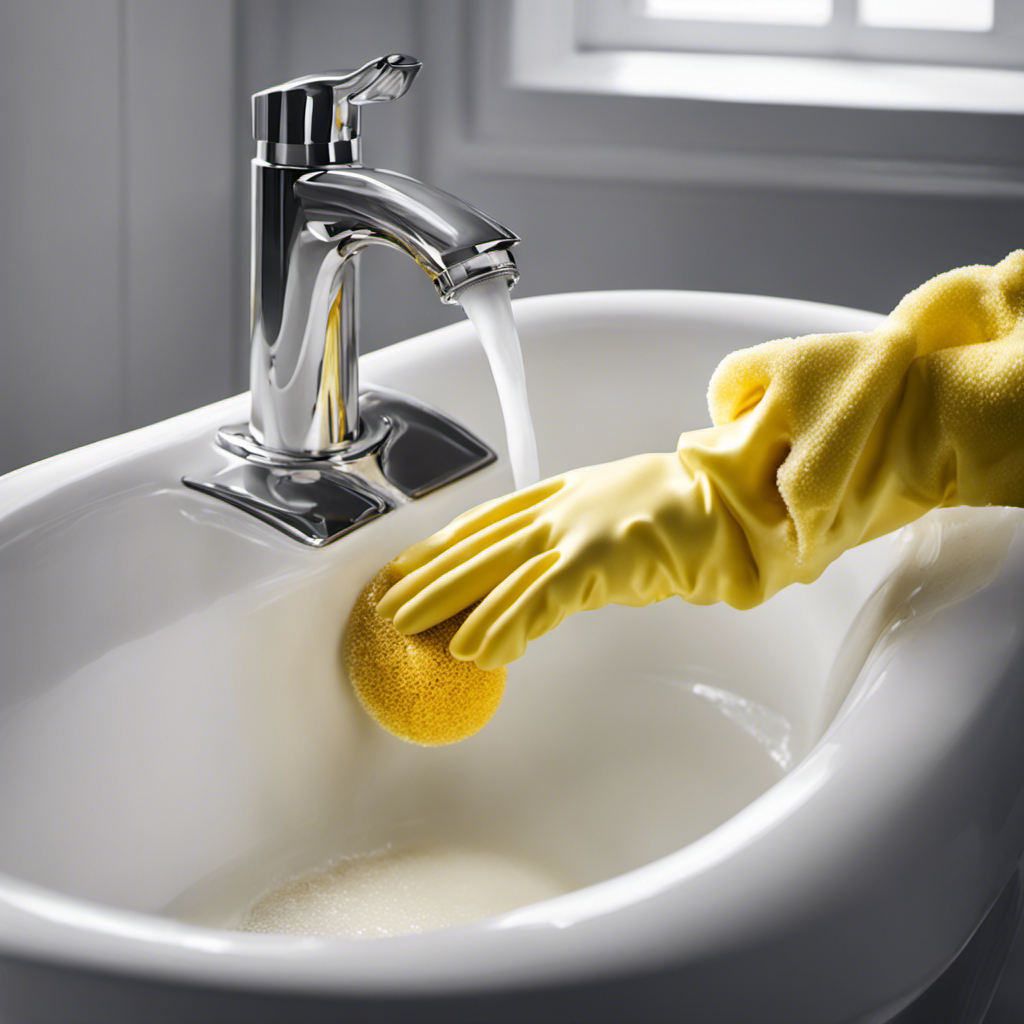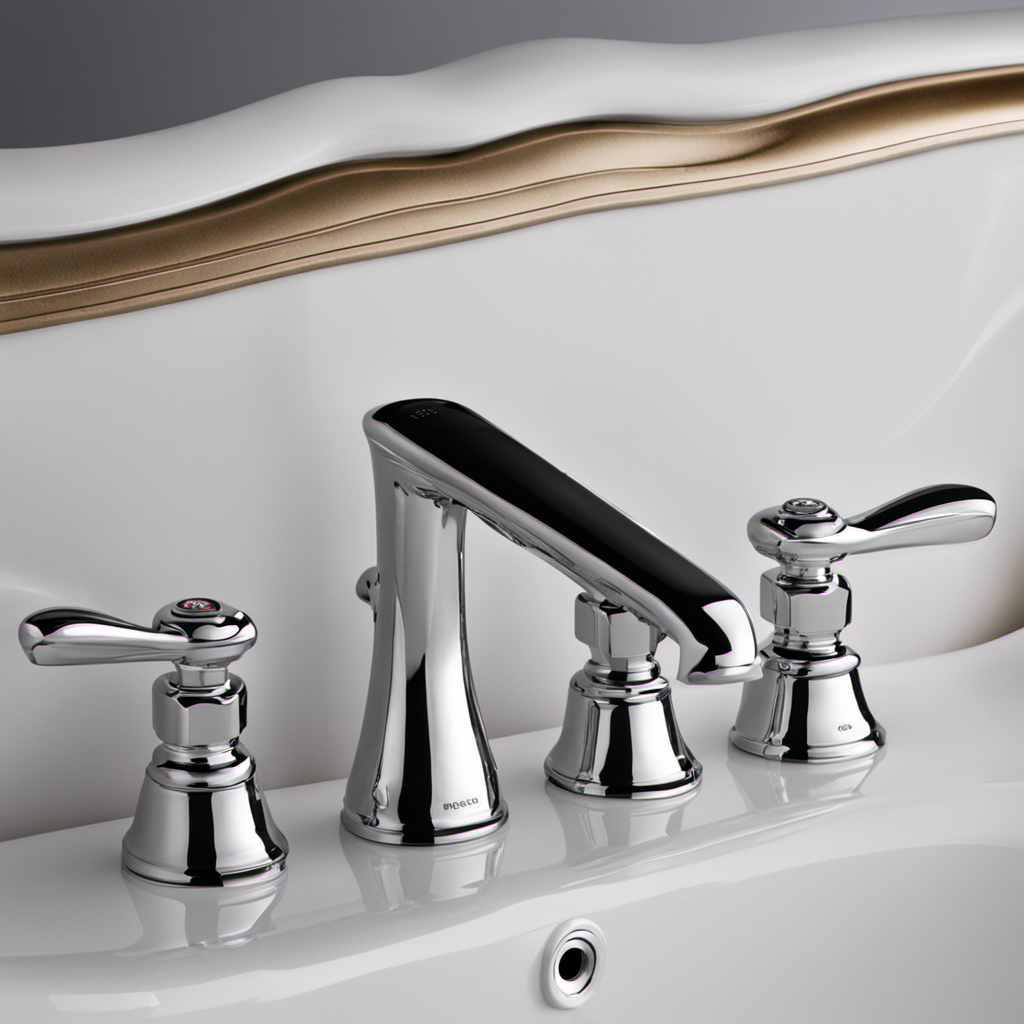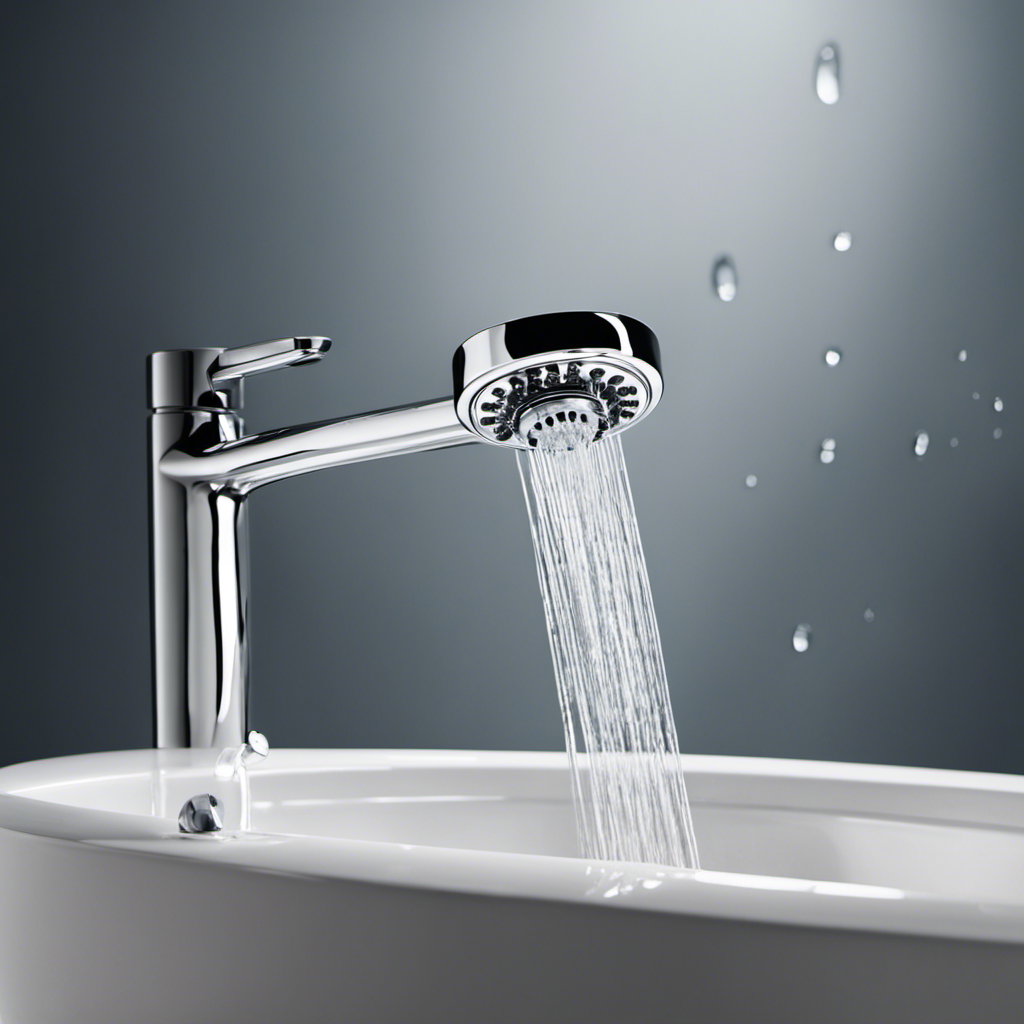So, you’ve noticed those pesky calcium deposits building up in your bathtub, huh? Well, fear not! I’m here to share with you my foolproof method for removing those stubborn stains.
With just a few simple supplies and a little elbow grease, you’ll have your bathtub looking sparkling clean in no time. Say goodbye to those unsightly deposits and hello to a pristine bathing experience.
Trust me, this technique is a game-changer!
Key Takeaways
- Calcium deposits are caused by hard water and can make the bathtub look dirty and dull.
- Regular cleaning and drying of the bathtub can prevent the formation of calcium deposits.
- White vinegar is an effective solution for removing calcium deposits.
- Taking preventive measures, such as wiping down the bathtub with a vinegar and water solution, can help avoid future calcium deposits.
Understanding Calcium Deposits
To understand how to remove calcium deposits from your bathtub, it’s important to first understand what calcium deposits are.
Calcium deposits are a result of hard water, which contains high levels of minerals like calcium and magnesium. When hard water is left to dry on surfaces, it can leave behind white, chalky deposits known as calcium deposits.
These deposits can build up over time, causing your bathtub to look dirty and dull. Not only are calcium deposits unsightly, but they can also have long-term effects on your bathtub’s surface, such as etching and staining.
To prevent the formation of calcium deposits, it is essential to regularly clean and dry your bathtub after each use.
Now that we understand what calcium deposits are and their long-term effects, let’s move on to gathering the necessary supplies.
Gathering the Necessary Supplies
Before you can start gathering the necessary supplies, make sure you have a list of items needed for the task. Cleaning calcium deposits from a bathtub requires specific cleaning equipment and safety precautions.
Here are three essential items you’ll need:
-
Rubber gloves: Protect your hands from harsh chemicals and potential skin irritation. Safety should always come first.
-
White vinegar: A natural and effective solution for removing calcium deposits. It’s non-toxic and won’t damage the bathtub surface.
-
Scrub brush: Choose a brush with stiff bristles to effectively scrub away the stubborn deposits. Make sure it’s suitable for use on the bathtub material.
Remember to ventilate the bathroom properly while cleaning and avoid mixing chemicals. Also, read and follow the instructions on the cleaning products for additional safety guidelines.
With the right supplies and precautions, you’ll be ready to tackle those unsightly calcium deposits in no time.
Preparing the Bathtub for Cleaning
Now, take a moment to assess the condition of your bathtub and gather the necessary supplies.
Once you have everything you need, it’s time to prepare the bathtub for cleaning. Start by filling the tub with warm water, ensuring that the water level is high enough to cover the affected areas.
Next, add a generous amount of white vinegar to the water. Vinegar is a natural cleaner that is effective at removing calcium deposits. Allow the vinegar and water mixture to sit in the tub for about 30 minutes to loosen the buildup.
Afterward, scrub the bathtub using a non-abrasive sponge or brush. Rinse the tub thoroughly with clean water and dry it with a towel.
To prevent future buildup, wipe down the bathtub after each use and consider using a water softener to reduce mineral content in the water.
Applying the Calcium Deposit Remover
First, make sure you have the necessary supplies ready to apply the remover and effectively get rid of the buildup.
Here’s how to apply the calcium deposit remover and dry your bathtub:
-
Apply the remover: Start by wearing gloves to protect your hands. Generously spray or pour the remover onto the affected areas. Make sure to cover all the calcium deposits and let the remover sit for the recommended time, usually around 10-15 minutes. This will allow the remover to penetrate and dissolve the deposits.
-
Scrub the deposits: After the recommended time has passed, use a scrub brush or sponge to gently scrub the areas with the calcium deposits. Apply some pressure to remove the buildup effectively. Rinse the brush or sponge as needed to prevent spreading the deposits.
-
Rinse and dry the bathtub: Once you’ve scrubbed away the deposits, thoroughly rinse the bathtub with warm water to remove any residue from the remover. Use a clean towel or microfiber cloth to dry the bathtub completely. This will prevent any water spots or new deposits from forming.
Rinse and Finishing Touches
To complete the process, make sure you rinse the affected areas thoroughly and use a clean cloth or towel to polish the surface. This final step will ensure that your bathtub is left sparkling and free of any calcium deposit residue.
In addition to removing calcium deposits from your bathtub, it’s important to take preventive measures to avoid future build-up. Here are some techniques for preventing calcium deposits:
-
Regular cleaning: Clean your bathtub regularly using a mild soap or detergent to prevent the accumulation of minerals.
-
Vinegar solution: Mix equal parts of vinegar and water and use this solution to wipe down your bathtub once a week. Vinegar helps dissolve calcium deposits and prevent their formation.
-
Water softener: Consider installing a water softener in your home to reduce the mineral content in your water supply.
-
Squeegee after use: After each use, squeegee the water off the bathtub surface to prevent mineral deposits from forming.
Conclusion
In conclusion, tackling calcium deposits in your bathtub may seem like a daunting task, but with the right supplies and a little elbow grease, you can restore your tub to its former glory.
Just like a brave knight battling a dragon, you too can conquer the calcium deposits that have taken over your bathtub. Armed with the calcium deposit remover as your trusty sword, you can slay the deposits and restore your bathtub to its sparkling clean state.
So go forth, my fellow warriors, and reclaim your bathtub from the clutches of calcium!










